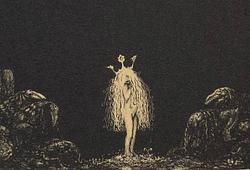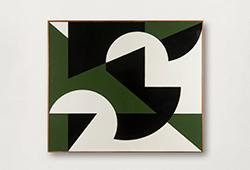Richard Prince
"Joke, Girlfriend, Cowboy", 2001
Signed Richard Prince and numbered R verso. Edition 18/26. Ektacolor print 76 x 101 cm.
Alkuperä - Provenienssi
F. Daniello Fine Art, Connecticut.
Muut tiedot
In the late 1960s, the availability of images in advertising and mass media increased. Artists such as Richard Pettibone and Andy Warhol brought these motifs into art and questioned the concepts of originality and copyright. Several conceptual artists extended this questioning within their respective media. In the early 1980s, artists such as Cindy Sherman, Barbara Kruger and Richard Prince had their breakthroughs using a similar approach. While Cindy Sherman scrutinized the objectifying image of young women, Richard Prince focused on the myths and aesthetics of popular culture. He was particularly interested in one of its main commercial representatives: The Marlboro Man. His artistic method was simple: he borrowed the cigarette brand's iconic advertising symbol: the free and manly cowboy. In doing so, he captured not only the cigarette brand's phenomenal invention, the Man with a capital M, but also a whole set of romantic yet cynical notions such as a longing for the return to nature and a traditional gender order. His image 'Untitled (Cowboy)', a rephotograph of Sam Abell's image for Marlboro, became the first work in this genre to sell for more than USD 1 million at auction in New York in 2005.
Richard Prince's exploration of masculinity and the possibilities of appropriation in art continued a decade later when he took on a very different kind of myth and aesthetic: motorcycle gangs. His 'Girlfriends' series went down like a bomb in art circles. This time, the images were originally amateur shots of gang members' girlfriends published in motorcycle magazines like Easy-riders and Iron Horse. Prince selected the pictures himself, took photographs of them and in some cases cropped them. In the magazines, the images are just one of many amateur photos, usually poorly lit and out of focus, but when Prince moves the subject to an artistic context, the anonymous portraits suddenly take on a whole new meaning as independent works of art. The auction's photograph combines Richard Prince's two best-known photographic series with his third genre, paintings of printed jokes. Begun in 1986, 'The Joke Series' has also become a signature work for Prince, combining painting with burlesque humor. The jokes often deal with taboos and frustrations of the white American middle class, highlighting sexism, racism and class issues.


































